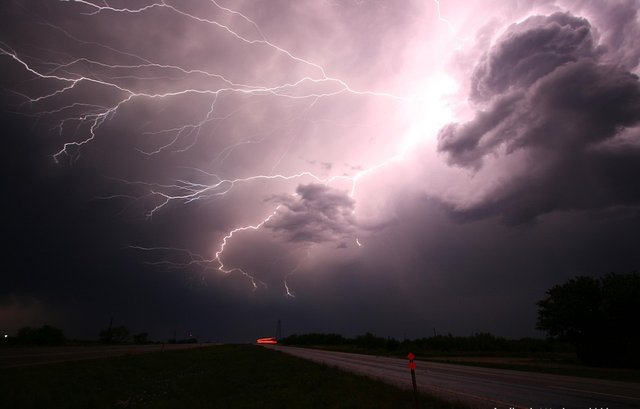Meteor, phenomenon of the atmosphere

Source
To say meteor is a confusing term for many people, they do not associate it with the atmosphere, rather they associate it with a meteorite or with the cartoon of the chariot racer. A meteor is a phenomenon that occurs in the atmosphere and is the object of study of meteorology.
According to the World Meteorological Organization (WMO) a meteor is an atmospheric phenomenon of the troposphere consisting of deposition, suspension and precipitation of particles in gaseous, liquid or solid form, or manifestation of energy or of an optical or sound nature in the atmosphere.
The WMO classifies meteors into five groups: hydrometeors (aqueous), lithrometeors (dust), photrometeors (luminous), electrometeors and acoustic meteors. Several authors still define eolometeors (thunderstorm, tornado, turbulence, tropical cyclones, dust blizzard) as part of the lithrometeors in the international classification.
Hydrometeors or aqueous meteors are divided into:
a) -Suspension of aqueous particles in the atmosphere: gael, fog, haze
b) - precipitation: fall of hydrometeors that reach the earth's surface:
Drizzle, rain, drizzle and freezing rain (supercooled), downpour, snow, hail, cellisca (small hail), cynar, diamond dust, snow and granular ice.
c) -particulate deposit:
frost, dew and advection dew, white dew
frost, advection frost, white and transparent frost.
d) - sets of particles lifted by the wind:
blizzard, high blizzard and low blizzard, dewdrifts
e) -Other: thunderstorm, virga (precipitation that evaporates again and does not touch the surface).
Lithrometeors or dust meteors:
a) -suspension of particles in the atmosphere: haze, dust haze, smoke, etc.
b) - sets of particles raised by the wind: dust or sand blizzard, dust or sand storm, dust or sand whirlwind (dust devil).
Photometeors, optical or luminous meteors: rainbows
solar or lunar halo phenomena (large halo, small halo, luminous pillar, circumcircumcenital arc, parhelion and paraselene), cloud iridescence, glories or crowns of Ulloa, mirage, optical trepidation, scintillation, green ray.
Electrometeors or electric meteors:
storm, lightning, thunder, lightning, aurora, San Telmo fire.
Acustic meteors or acoustic meteors:
Thunder and Echo.
We must study the atmosphere as a medium of our planet and meteors as part of the habitat.
hello @eliorrios,
there are a lot of definitions that I really did not know, thanks for the information, on the other hand we use the word meteor only to refer to the rocks that fall to earth, I do not know if with more study I can clarify my doubts or on the contrary I will be more confused, the study of the atmosphere is something that I have not had the opportunity to deepen but I think that after this article I will investigate more to clarify my doubts.
Hello friend @eliorrios
What you mention "We must study the atmosphere as the environment of our planet and the meteors as part of the habitat", is totally true, it is a pity that as humans we do not realise this and we do little research on this extraordinary atmospheric world.
Best regards, be well.
Hello @eliorrios, I think that meteors will always be something surprising because they are not easy to understand, because they are strange, we cannot always say that we have seen some and because they are part of the beautiful mysteries of the earth and the atmosphere.
Thank you for this valuable information.